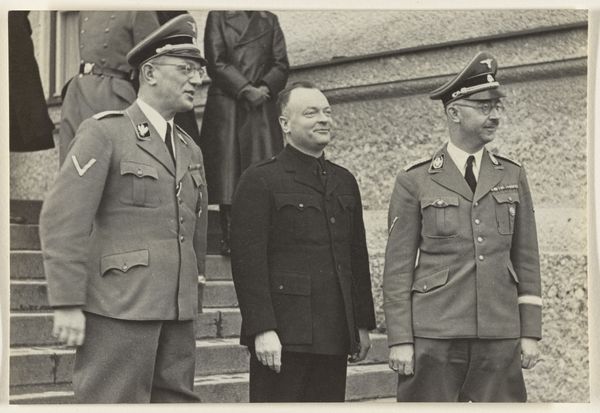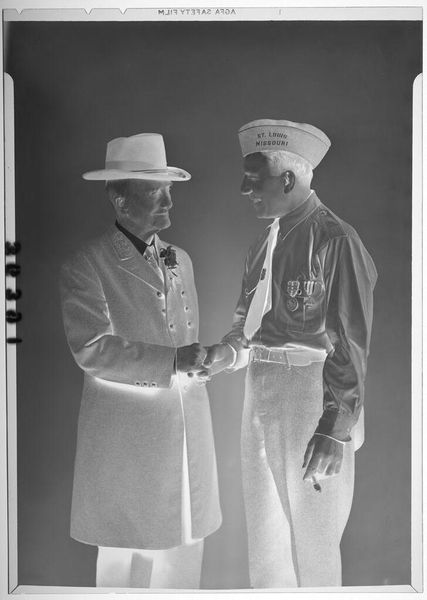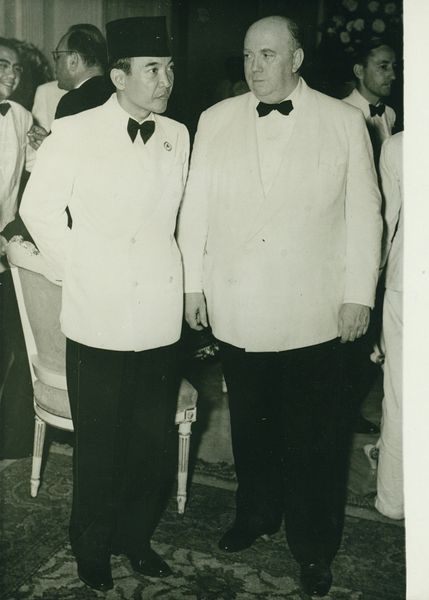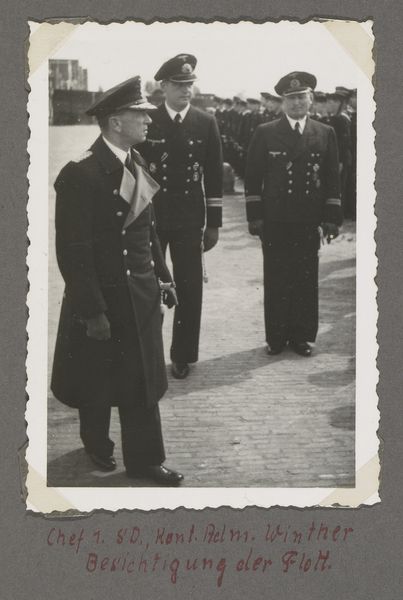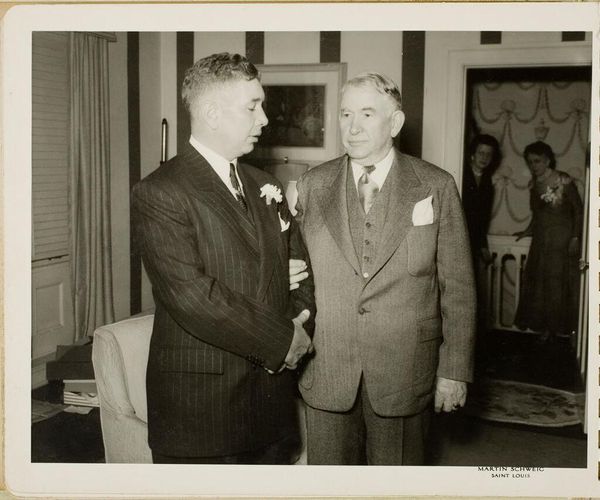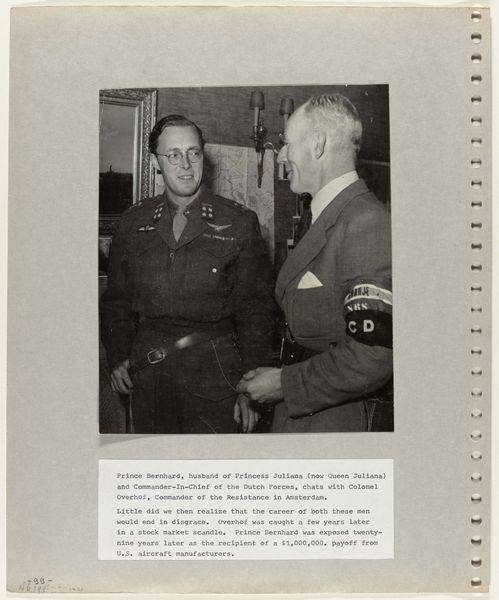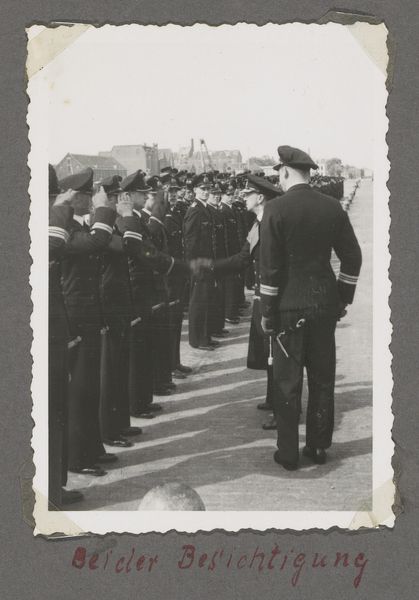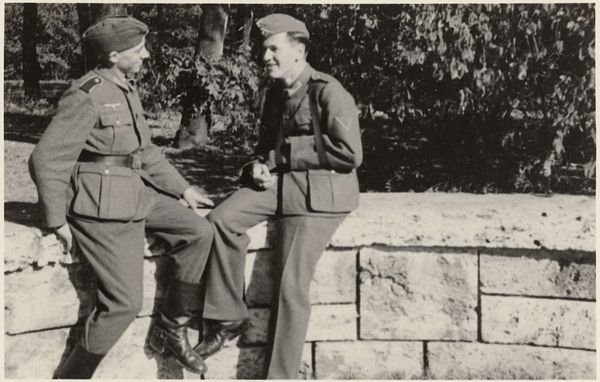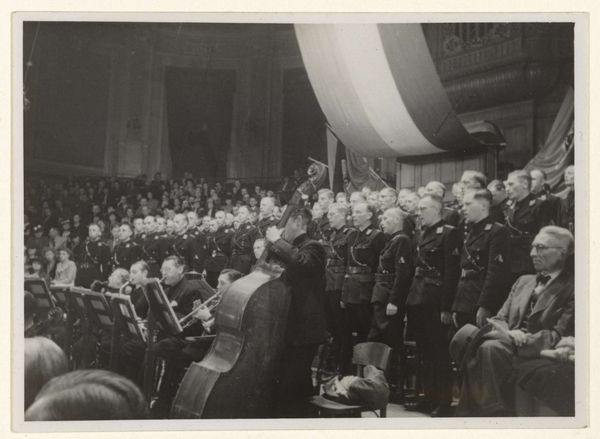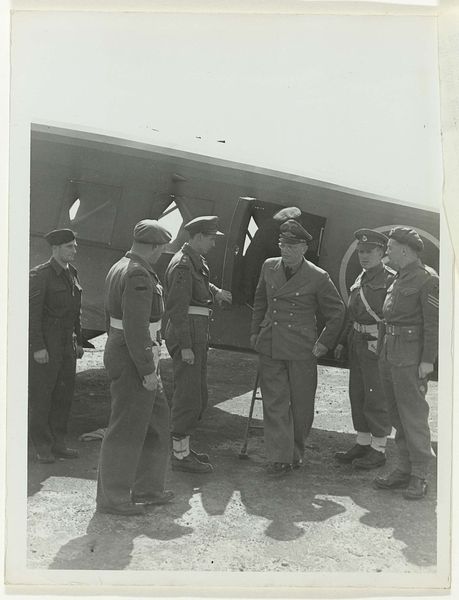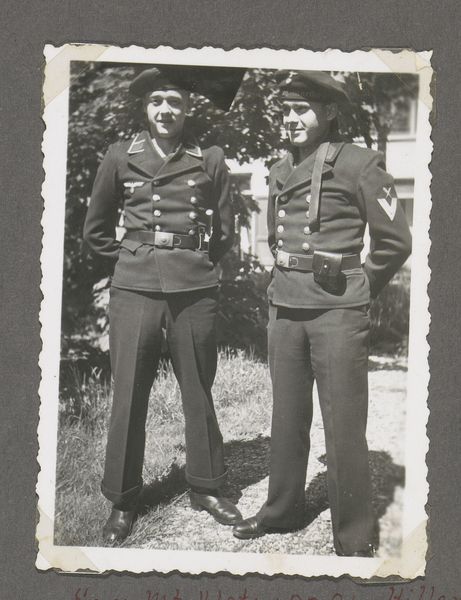
#
picture layout
#
wedding photograph
#
photo restoration
#
photo element
#
wedding photography
#
historical photography
#
couple photography
#
photo layout
#
portrait character photography
#
portrait photography
Dimensions: height 228 mm, width 180 mm
Copyright: Rijks Museum: Open Domain
Curator: Editor: So this photograph, “Harry Truman op conventie van 'Truman-legion'” from 1948 by Irwin Tress, captures what looks like a formal meeting. The handshake between the two men is the focal point. What strikes me is how it seems to portray Truman almost as an ordinary person rather than the President. How do you interpret this work, especially considering the time it was taken? Curator: This photograph, seemingly a simple handshake, opens up a powerful lens onto postwar American identity and the careful construction of political image. Consider the context: Truman, a relatively uncharismatic figure, followed the iconic Roosevelt. He needed to connect with the public. Editor: Right, he wasn’t a natural speaker or as beloved as Roosevelt. So, the image is a calculated attempt to appear more relatable? Curator: Precisely. Think about the 'Truman Legion' itself. What does it mean for a political figure to have a veterans group named in his honor? It signifies a deep connection to a specific demographic, in this case, veterans returning from World War II. He is leveraging their specific experiences. What does it signal, do you think, in terms of American political culture? Editor: It feels like a strategic maneuver to solidify his base by tapping into the patriotism and collective identity of war veterans. The picture sort of becomes evidence of a bond, rather than just him giving a speech. Curator: Absolutely! The handshake then is symbolic of solidarity and loyalty during a critical juncture, the beginning of the Cold War. Editor: This makes me see it completely differently, it isn't about the handshake but about the performance of unity. I had originally overlooked that nuance entirely! Thanks! Curator: And seeing it that way acknowledges not just the picture's content but also its potential as political propaganda and historical documentation. It reveals the intertwined relationship of politics, identity, and visual culture.
Comments
No comments
Be the first to comment and join the conversation on the ultimate creative platform.

